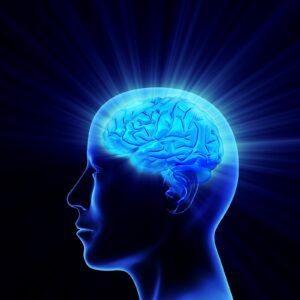As we set our ships to sail in the New Year, one resolution top of mind in many CEO’s is the need to modernize or "re-skill", Human Resources. Savvy business leaders have found critical importance in having an HR function rise above just having a compliance role and muddling by. CEO's seeking to achieve a competitive advantage in a new economy requires HR to deliver value at a rapid pace.
What does a modern HR organization look like?
There are many opinions out there about what modern HR looks like. However, the thought leadership concepts seem to revolve around four themes.
1) Innovative Mind Set
 A major stumbling block for the HR function is the inherent focus on, “it can’t be done.” Because of heavy regulations, multiple policies or decades old practices, HR has the challenge of rising above restricted thinking and is seen as the department of “no’s.”
A major stumbling block for the HR function is the inherent focus on, “it can’t be done.” Because of heavy regulations, multiple policies or decades old practices, HR has the challenge of rising above restricted thinking and is seen as the department of “no’s.”
A modern HR function focuses on how it “can be done” and is not afraid to trying something new. If it meets a roadblock going one way it considers and identifies alternative paths to accomplishing objectives. It has a deep command of technical options at its fingertips for recruiting, retaining and developing top talent to meet any new objective, project or service line a business may wish to take on.
2) Global Business and Industry Acumen
HR Professionals need to know not just the HR side of the business. But they also need to have a global business perspective. A modern HR function knows how supply chain, operations, marketing, sales, finance and so on work. It can answer how a company generates its revenue and what labor strategies can impede or grow profitability.
The modern HR is boundary busting and doesn’t put limits, on limitless possibilities. Which means going beyond boundaries whether geographically or departmentally. Reaching outside of the silo mentality and forming strategic alliances across borders to help its organization achieve objectives is a chief imperative.
3) Technologically Savvy
Technology is exploding in the HR space. We now have the ability to apply sound data analytics to predict turnover, assess talent and recruit a skilled workforce like never before. Leveraging technology to make sound labor and talent decisions is certainly here to stay. A modern HR will embrace technology and always seeking continuous improvement leveraging new developments.
4) Leadership
A modern HR is prepared to lead through numerous avenues as change and project management, continuous development and information sharing. Separately, a business leadership is key to putting wind in the sails of employee engagement, attracting and retaining talent, and inspiring greatness throughout the organization.
Modern HR is an enabler to leadership greatness. Empowering and supporting leaders by providing coaching tools and resources and development is a must.
How to get there?
Revisit the structure.
Chances are a HR function is structured in a way to support decades old business objectives. However, to meeting shifting market trends a business must change and so must its HR function. Perhaps its time to breath life into an old functional structure and consider a different service centric model that supports the overall objectives of the business.
Redefine roles.
Once a new structure is decided on roles should be redefined to support the overall direction. The best approach is to take the personalities out of the equation and determine the roles, knowledge, skills and abilities to best support the new direction. Once the ideal state is visualized then it becomes clear whether training or different skills altogether are required.
Evaluate the infrastructure (systems and processes).
It is not easy trying to modernize a HR function without a solid infrastructure in working systems and streamlined processes to carry out initiatives. It's like trying to ride a bike without wheels. To assess the situation, one thing to look for is whether or not the HR function developed processes to support the system, or if the system supports the function and ultimately the overall business objectives.
Invest in your human resources function.
Ironically the very people businesses depend on to train do not get current training themselves. Sadly HR functions are often overlooked when doling out training budgets and development initiatives. Invest in certifying, developing and enhancing the skill of HR.
There is a golden opportunity for Human Resources leaders to assess and reinvent the function and rise above the wave of business demand. Set wind to your sails this New Year and launch to a new horizon of accomplishment.
Latest posts by Tresha Moreland (see all)
- Recession 2008 Versus 2024: Lessons Learned and Key Workforce Differences - April 24, 2024
- Why Layoffs Fall Short: Embracing a Holistic Approach to Cost Savings - April 21, 2024
- Find Your Anchor In A Sea Of Fear - April 18, 2024














